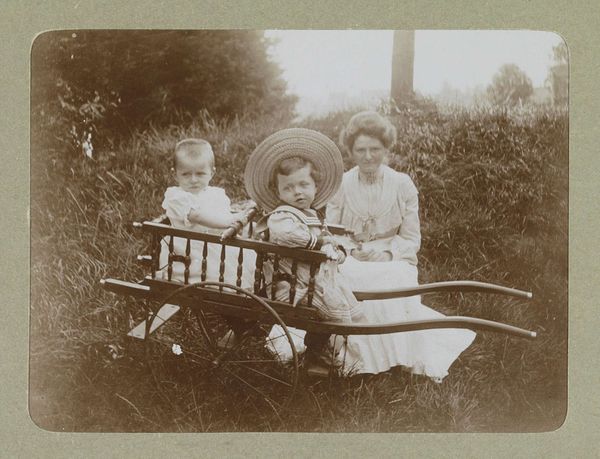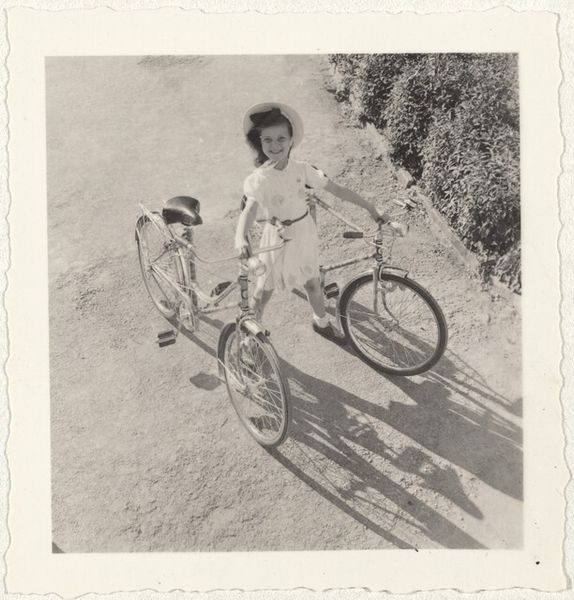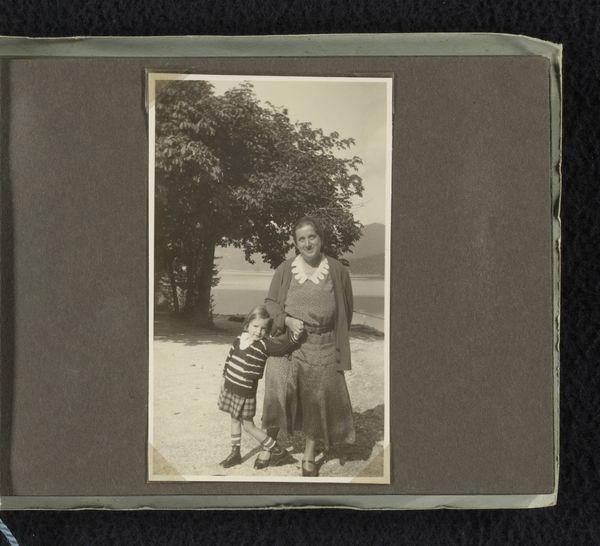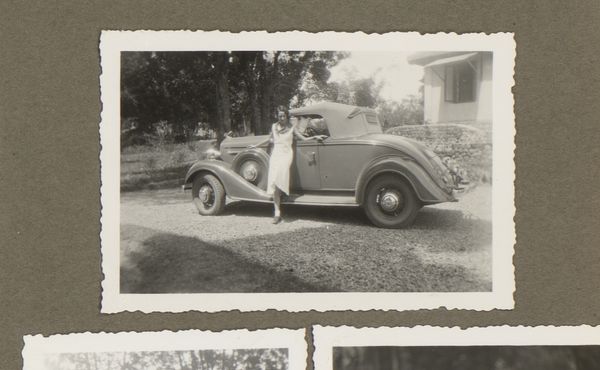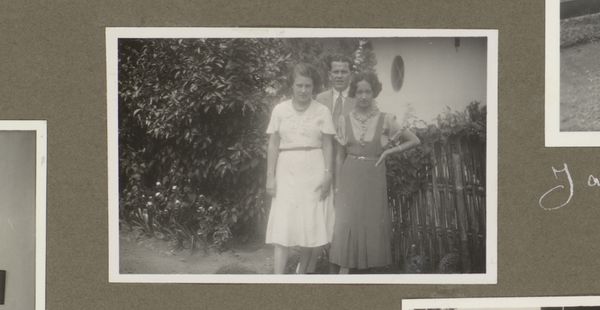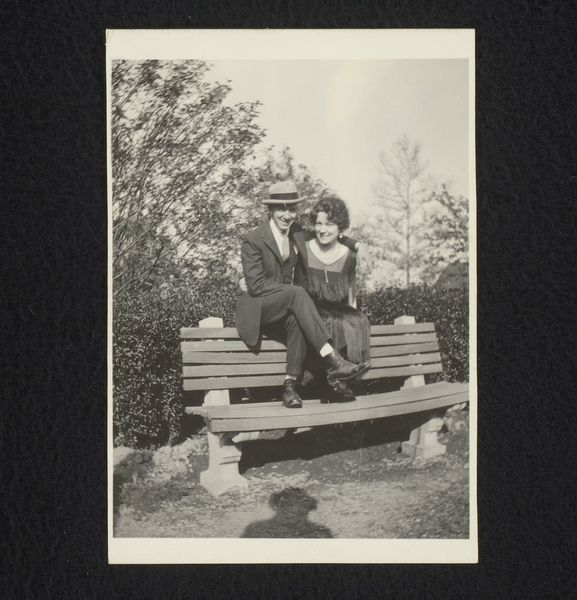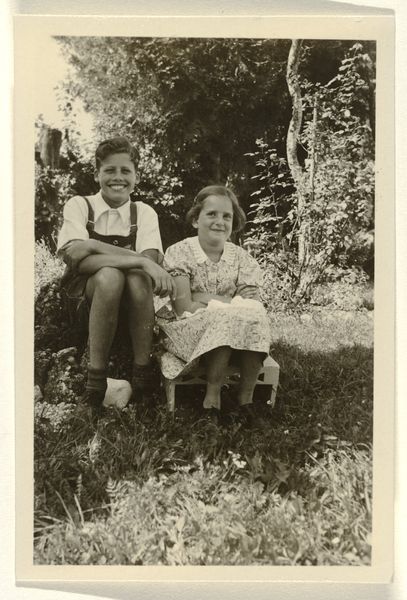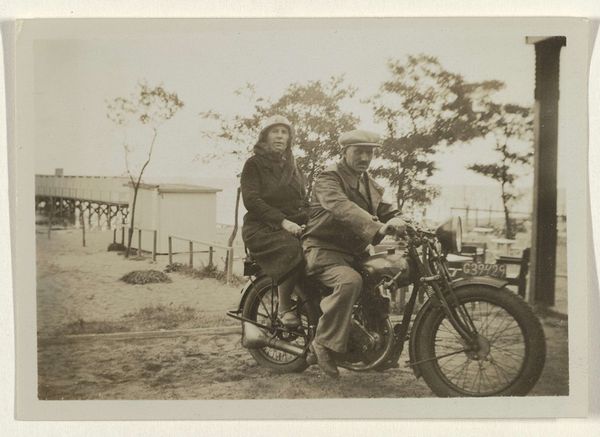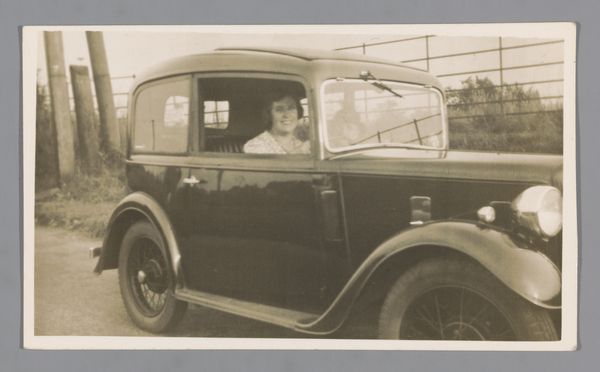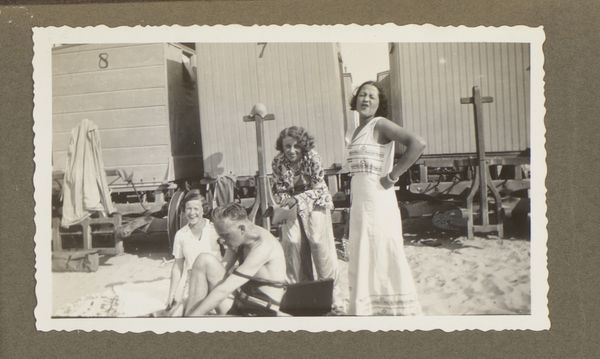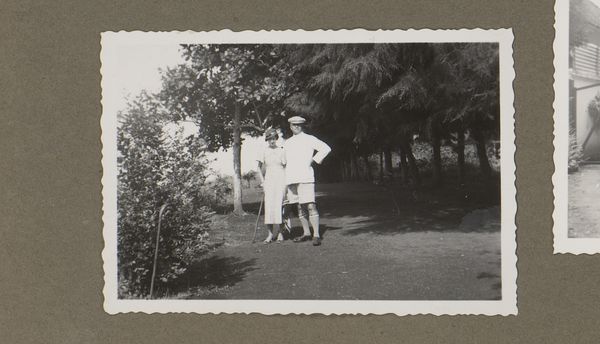
Leo Blumensohn en Isabel Wachenheimer gezeten op een motor, staand voor een hek en een begroeide helling, 1945-1949 1945 - 1949
0:00
0:00
photography, gelatin-silver-print
#
portrait
#
landscape
#
photography
#
gelatin-silver-print
Dimensions: height 65 mm, width 85 mm
Copyright: Rijks Museum: Open Domain
Curator: This gelatin silver print, titled "Leo Blumensohn en Isabel Wachenheimer gezeten op een motor, staand voor een hek en een begroeide helling" dates to between 1945 and 1949. What do you make of it? Editor: It’s incredibly intimate, almost dreamlike. The gray scale lends a wistful air to what appears to be a couple enjoying a moment of respite. Curator: Indeed. Consider the historical context. The latter half of the 1940s represented a period of intense social restructuring. The image speaks to themes of hope, freedom, and perhaps, a cautious optimism amidst lingering uncertainties from the war era. Motorbikes specifically offered newfound mobility, especially important in a world still healing from the consequences of WWII. Editor: I'm drawn to the staging of the image – it's quite formal, wouldn't you say? The way they are posed, the rigid motorcycle in front of them—there’s an interesting juxtaposition between this structured composition and what feels like an attempt to appear casually happy in front of it all. Who took this photo is, in my opinion, an equally crucial detail worth further research. Curator: Absolutely, we see elements that echo staged portraiture and family photography. But the landscape setting – the slope, the fencing – complicates that reading, hinting at a world they're trying to reconnect with, to overcome and enjoy together, one ride at a time. And of course the relationship is equally important. The photograph encapsulates the societal expectations placed upon them but also offers the agency of mobility by claiming the motorcycle, albeit by just posing on it. The image itself and the context becomes, essentially, another actor. Editor: It definitely encourages speculation. Did they choose the location themselves or were there factors imposed upon their decision. The neutrality, and borderline anonymity of the scenery as such could tell us something important about the socio-economic situation or other constraints the two could've lived through during the post-war period. The stark contrast in greyscale, as such, lends an even bigger power to the narrative. Curator: Analyzing the image allows us a deeper exploration of that specific post-war generation and the various expectations and societal transformations at play during this time. Editor: I’ll leave with an extended gaze upon the backdrop that makes the subjects themselves shine brighter in an instant.
Comments
No comments
Be the first to comment and join the conversation on the ultimate creative platform.
